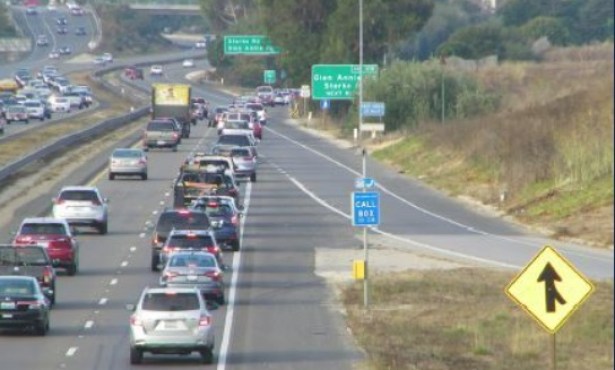Santa Barbara’s Rent Stabilization Plan Unveiled
City Councilmembers Sneddon and Harmon Discuss 2 Percent Cap on Rent Increases

With the possibility of mass evictions now looming in Santa Barbara — as throughout the state and nation — because of COVID-19, Santa Barbara city councilmembers Kristen Sneddon and Meagan Harmon have launched a public conversation about what they are terming a “Community Stabilization Initiative” to limit how much rents can be increased by in Santa Barbara.
In a memo delivered last week to City Administrator Paul Casey, Mayor Cathy Murillo, and the rest of the council, Sneddon and Harmon argued that Santa Barbara’s rental situation had grown so dire for so many households that the community needed the protection of a vacancy decontrol measure stricter than the one approved statewide last year.
If acted upon, their initiative would allow landlords to increase their rents by no more than 2 percent per year on their existing tenants. Once those tenants move out — voluntarily — they added, landlords would be allowed to raise the rents to whatever the market would bear, but with a few provisos. In no event, the councilmembers suggested, could rents be allowed to be raised by more than 10 percent in any 12-month period, nor could they be increased by more than 30 percent over any five-year period.
Get the top stories in your inbox by signing up for our daily newsletter, Indy Today.
Under a statewide act signed into law by Governor Gavin Newsom in 2019, landlords are currently barred from raising rents on existing tenants by more than 5 percent a year coupled with the consumer price index (CPI). With the CPI at one percent, that translates to maximum rent increases of 6 percent now legally allowed.
In their joint memo, Harmon and Sneddon cited a study by Central Coast Alliance United for a Sustainable Economy (CAUSE) indicating more than half of city renters are now paying more than 30 percent of their income on housing. That’s the threshold set by the federal government as the maximum amount deemed economically healthy. That, they said, makes Santa Barbara County the sixth most “cost-burdened” county out of California’s 58 counties.
Although Santa Barbara’s rental market has grown more cost-prohibitive in recent years, the grave uncertainty generated by the COVID crisis on the economy clearly motivated the two councilmembers as well. With federal unemployment assistance expiring two weeks ago and a new stimulus deal stalled in the Senate, Harmon and Sneddon expressed concern about the downstream impact on tenants struggling to pay their rents.
The eviction protection measures enacted by both the City Council and the Board of Supervisors expire September 30, as does the one adopted by Governor Gavin Newsom. The more meaningful barrier blocking resumed evictions — the one adopted by the California Judicial Council — will be lifted this week on August 14.
“Economists predict an avalanche of evictions following the expiration of moratoriums across the country, and the same can be expected in Santa Barbara,” reads the joint statement by Harmon and Sneddon. “By coupling rent stabilization with vacancy decontrol as we have, we are facilitating much-needed stability for our community’s families, while respecting the rights of landlords to price their units in accordance with market forces.”
Exempt for their proposal are duplexes where the owner occupies one of the other units, including granny flats; deed-restricted affordable housing; government-subsidized affordable housing; and rental units within a single-family home or condo.
“The Community Stabilization Initiative is a reasonable and constrained but ultimately profoundly impactful step on the path towards solving the rental affordability crisis in Santa Barbara,” the two councilmembers concluded. “Efforts to promote community stability have never been more critical than they are today.”
Word of this initiative comes as many landlords find themselves reeling from the economic secondhand smoke inflicted by COVID: many tenants unable to pay some or all of their monthly rents. Although no exact numbers exist for Santa Barbara, a statewide snapshot taken by the U.S. Census bureau suggests that three million California tenants in the last week of July expressed low or no confidence in their ability to pay their upcoming rent.
Landlords have been barred from evicting tenants who can’t pay because of COVID, but efforts to secure landlords some modicum of mortgage relief legislatively have gone nowhere fast in Sacramento. One bill — AB 2501 — pushed by Santa Barbara’s Assemblymember Monique Limón went down in defeat despite strenuous exertions on her behalf by the Assembly Speaker to wrangle the votes. Two other bills are still winding their way through the committee hearings, and their ultimate outcome is far from certain.
With the clock ticking, many landlords — especially the so-called mom-and-pops — find themselves stuck between the proverbial rock and a hard place.
The Harmon-Sneddon initiative will no doubt add drama to this Tuesday’s Ordinance Committee hearing of the City Council, which begins deliberations this week on how much relocation assistance to require landlords to provide tenants being forced out through no fault of their own, such as failure to pay rent. Based on the economic analysis provided by consulting firm Keyser Marston Associates, those costs could be as low as $2,365-$7,125, depending on the number of units involved and the distance the displaced tenants have to move to find new rental accommodations. For those with special needs, the relocation assistance required could be as high as $8,460.
Many landlords and their organized representatives have expressed concern that that such additional costs could push them out of business. Pro-tenant groups like CAUSE and the Legal Aid Society — which represents tenants facing evictions unable to pay for their own attorneys — have argued such relocation assistance is necessary to protect rule-abiding and responsible tenants who could otherwise find themselves forced out of the dwellings they’ve long occupied by owners seeking to remodel their units and charge higher rents.
The virtual Ordinance Committee meeting is scheduled to begin on Tuesday, August 11, at 11:30 a.m.
Correction: The statewide rent-cap law that was passed in 2019 and went into effect this year was not approved by voters but instead signed into law by Governor Newsom.
Every day, the staff of the Santa Barbara Independent works hard to sort out truth from rumor and keep you informed of what’s happening across the entire Santa Barbara community. Now there’s a way to directly enable these efforts. Support the Independent by making a direct contribution or with a subscription to Indy+.



